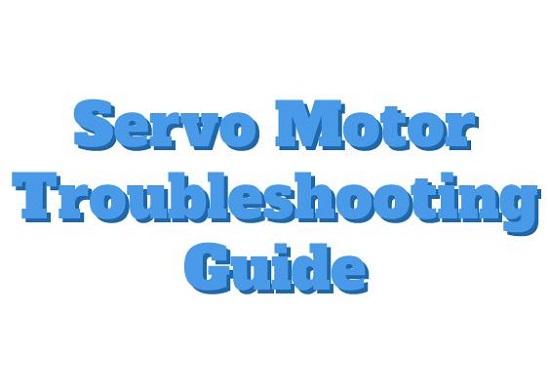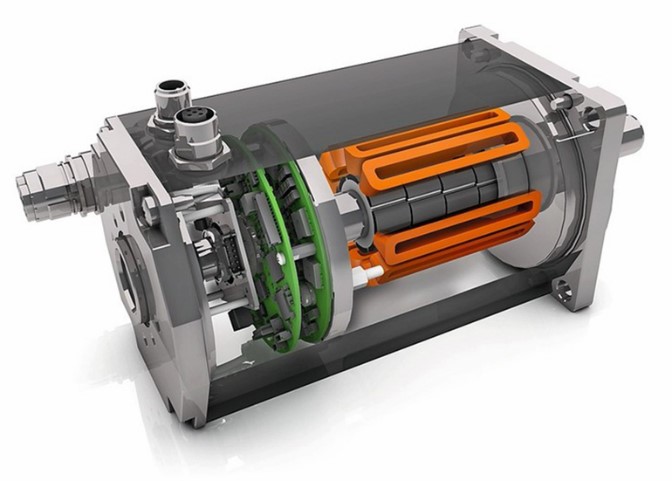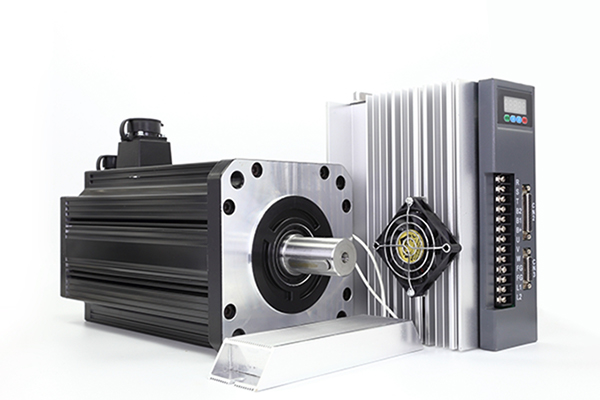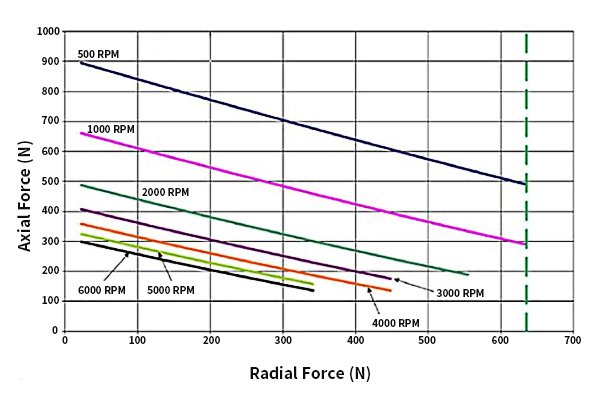Servo Motor Faults and Troubleshooting
Servo motors are widely used in various applications for their precision and accuracy in controlling angular or linear position, velocity, and acceleration. Like any other electrical or mechanical component, servo motors can experience faults and errors. Here are some common servo motor faults, errors, and troubleshooting tips.

Servo Motor Overheating
Out of all servo motor faults, overheating is one of the most common. It can be caused by an overcurrent on the machine. You or your maintenance engineer should look at the mechanical binding, any brake issues or check for any signs of overloading occurrence. Those are your possible mechanical issues. If it isn’t a mechanical issue, inspect the shaft of the motor and spin it to check for any bearing failures. You can also check the windings for any issues, such as contamination or for any signs of short circuiting. To prevent servo motor overheating in future, you can
Servo Motor Does Not Turn
Occasionally, your servo motor might fail to rotate or turn even after being powered. But there’s no smoke, peculiar smell, or abnormal sound. Well, this diagnosis may seem like bad news especially because a servo motor has so many components which could make it difficult to pinpoint the exact cause of the problem. But here are some possible reasons why a servo motor may fail to turn.

Excessive Vibration
Sometimes, the vibration of a running servo motor may be quite violent. Some of the possible causes of excessive vibration in a servo motor include
We don’t have to tell you that factories and plants are dirty places. So, it should be no surprise that contamination dust, oil, etc can get into your servo motor and cause a fault. The contamination may affect the brakes, bearing or elsewhere. Expect friction, which would cause underperformance and a lot of grinding. You may notice a screeching noise, so listen out for that. To solve this, you could disassemble the servo motor, clean and reassemble.
 Setup Issue or Loss of Parameters
Setup Issue or Loss of Parameters
Your servo motor may be suffering positioning errors through a setup issue or loss of parameters. To check, you can go through the usual setup procedures of both the motor and the connected drive. If something doesn’t flare up, there may be a feedback issue with the motor that requires repair.
Always consult the manufacturer's documentation and guidelines for specific troubleshooting steps and recommendations for your particular servo motor model.

Servo Motor Overheating
Out of all servo motor faults, overheating is one of the most common. It can be caused by an overcurrent on the machine. You or your maintenance engineer should look at the mechanical binding, any brake issues or check for any signs of overloading occurrence. Those are your possible mechanical issues. If it isn’t a mechanical issue, inspect the shaft of the motor and spin it to check for any bearing failures. You can also check the windings for any issues, such as contamination or for any signs of short circuiting. To prevent servo motor overheating in future, you can
- Regulate the heat better.
- Use fans correctly and open, airy cabinets.
- Replace old, worn components.
- Turn the servo motor off occasionally to allow cooling down.
Servo Motor Does Not Turn
Occasionally, your servo motor might fail to rotate or turn even after being powered. But there’s no smoke, peculiar smell, or abnormal sound. Well, this diagnosis may seem like bad news especially because a servo motor has so many components which could make it difficult to pinpoint the exact cause of the problem. But here are some possible reasons why a servo motor may fail to turn.
- No supply voltage-at least two-phase supply.
- Fuse failure in at least two phases, for a 3-phase supply line.
- The servo controller is not receiving command signals i.e. run or speed signals.
- Loose servo motor coupling.
- Bad connection due to loose or open motor connections, cables, and connectors.
- Motor thermal overload has tripped due to motor overheating.
- Wiring error of the motor’s control unit.
- Unsuccessful/incomplete servo motor debugging.
- Check and repair any breakpoint at the rotary switch of the servo motor’s power supply, junction box, and fuse.
- Check the type of failed fuse, and the reason for its failure, and replace it with a new one.
- Check the input signals to the servo controller.
- Check the motor coupling and rectify it if necessary.
- Check all motor connections, cables, and connectors for looseness, and tighten them accordingly.
- Check all motor thermal relays. Also, check the servo controller for any faults related to motor overheating.
- Correct the control unit wiring.
- Adjust the settings of the servo motor parameters appropriately or complete any ongoing system debugging.

Sometimes, the vibration of a running servo motor may be quite violent. Some of the possible causes of excessive vibration in a servo motor include
- Uneven or big air gap caused by worn bearings or bearing abrasion.
- Misalignment of the servo motor with the load being driven.
- The rotating shaft of the servo motor is bending.
- Unbalanced rotor.
- The coaxial of the servo motor coupling is too low, especially where a belt pulley is used.
- Improper servo motor mounting.
- Check, repair or change the bearings if necessary.
- Check alignment of the motor with driven load, couplings, and for any possible shim movement.
- Check and correct both motor and load balance issues.
- If the servo motor is belt coupled, remove the belt pulley and see if the coaxiality is still too low or if the motor is still out of balance.
- Inspect for worn or loose servo motor mounts.
We don’t have to tell you that factories and plants are dirty places. So, it should be no surprise that contamination dust, oil, etc can get into your servo motor and cause a fault. The contamination may affect the brakes, bearing or elsewhere. Expect friction, which would cause underperformance and a lot of grinding. You may notice a screeching noise, so listen out for that. To solve this, you could disassemble the servo motor, clean and reassemble.

Your servo motor may be suffering positioning errors through a setup issue or loss of parameters. To check, you can go through the usual setup procedures of both the motor and the connected drive. If something doesn’t flare up, there may be a feedback issue with the motor that requires repair.
Always consult the manufacturer's documentation and guidelines for specific troubleshooting steps and recommendations for your particular servo motor model.
Post a Comment:
You may also like:

Category
Featured Articles
Difference Between Servo and Stepper ...
 Servo motor and stepper motor are almost used in all automated industries where high precision is to be achieved. Though servo ...
Servo motor and stepper motor are almost used in all automated industries where high precision is to be achieved. Though servo ...
 Servo motor and stepper motor are almost used in all automated industries where high precision is to be achieved. Though servo ...
Servo motor and stepper motor are almost used in all automated industries where high precision is to be achieved. Though servo ...Why Use Servo Motor as Test Load?
 Dynamometer is mainly divided into two parts: cabinet and frame, while the frame mainly has the motor under test, torque speed ...
Dynamometer is mainly divided into two parts: cabinet and frame, while the frame mainly has the motor under test, torque speed ...
 Dynamometer is mainly divided into two parts: cabinet and frame, while the frame mainly has the motor under test, torque speed ...
Dynamometer is mainly divided into two parts: cabinet and frame, while the frame mainly has the motor under test, torque speed ...Safety Precaution For Using Servo Motor
 In the realm of industrial automation, servo motors play a crucial role in achieving precision and control. These devices are ...
In the realm of industrial automation, servo motors play a crucial role in achieving precision and control. These devices are ...
 In the realm of industrial automation, servo motors play a crucial role in achieving precision and control. These devices are ...
In the realm of industrial automation, servo motors play a crucial role in achieving precision and control. These devices are ...Troubleshooting of Servo Motor
 Servo motors play a crucial role in various industrial applications, providing precision control and efficient performance. ...
Servo motors play a crucial role in various industrial applications, providing precision control and efficient performance. ...
 Servo motors play a crucial role in various industrial applications, providing precision control and efficient performance. ...
Servo motors play a crucial role in various industrial applications, providing precision control and efficient performance. ...